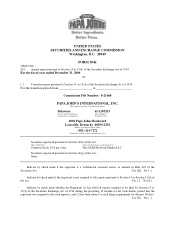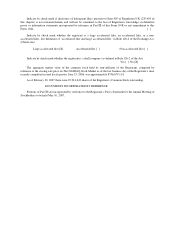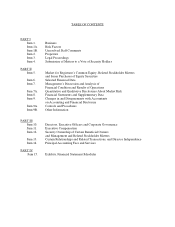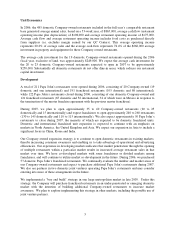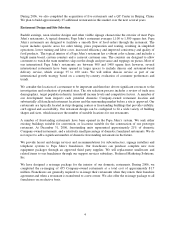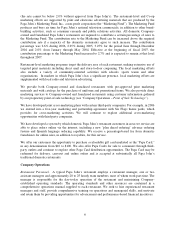Papa Johns 2006 Annual Report Download - page 6
Download and view the complete annual report
Please find page 6 of the 2006 Papa Johns annual report below. You can navigate through the pages in the report by either clicking on the pages listed below, or by using the keyword search tool below to find specific information within the annual report.3
Unit Economics
In 2006, the 485 domestic Company-owned restaurants included in the full year’s comparable restaurant
base generated average annual sales, based on a 53-week year, of $865,000, average cash flow (restaurant
operating income plus depreciation) of $198,000 and average restaurant operating income of $175,000.
Average cash flow and average restaurant operating income includes food costs as purchased directly
from suppliers (i.e. excludes margin earned by our QC Centers). This average operating income
represents 20.2% of average sales and the average cash flow represents 74.4% of the $266,000 average
investment in property and equipment for these Company-owned restaurants.
The average cash investment for the 19 domestic Company-owned restaurants opened during the 2006
fiscal year, exclusive of land, was approximately $249,000. We expect the average cash investment for
the 20 to 25 domestic Company-owned restaurants expected to open in 2007 to be approximately
$250,000. Substantially all domestic restaurants do not offer dine-in areas, which reduces our restaurant
capital investment.
Development
A total of 211 Papa John’s restaurants were opened during 2006, consisting of 20 Company-owned (19
domestic and one international) and 191 franchised restaurants (105 domestic and 86 international),
while 122 Papa John’s restaurants closed during 2006, consisting of one domestic Company-owned and
121 franchised restaurants (65 domestic and 56 international, 34 of which were in Mexico in response to
the termination of the master franchise agreement with the previous master franchisee).
During 2007, we plan to open approximately 35 to 40 Company-owned restaurants (20 to 25
domestically and 15 internationally) and expect franchisees to open approximately 240 to 260 restaurants
(130 to 145 domestically and 110 to 115 internationally). We also expect approximately 50 Papa John’s
restaurants to close during 2007, the majority of which are expected to be domestic franchised units.
Domestic and international franchised unit expansion is expected to continue with an emphasis on
markets in North America, the United Kingdom and Asia. We expect our expansion in Asia to include a
significant focus in China, Korea and India.
Our Company-owned expansion strategy is to continue to open domestic restaurants in existing markets,
thereby increasing consumer awareness and enabling us to take advantage of operational and advertising
efficiencies. Our experience in developing markets indicates that market penetration through the opening
of multiple restaurants within a particular market results in increased average restaurant sales in that
market over time. We have co-developed markets with some franchisees or divided markets among
franchisees, and will continue to utilize market co-development in the future. During 2006, we purchased
57 domestic Papa John’s franchised restaurants. We continually evaluate the number and market areas of
our Company-owned restaurants and expect to purchase additional Papa John’s restaurants during 2007.
We also are partners in two domestic joint ventures operating Papa John’s restaurants and may consider
entering into more of these arrangements in the future.
We implemented a “buy and build” strategy in one large metropolitan market in late 2005. Under this
strategy, the Company will purchase franchised restaurants in an under-penetrated or emerging domestic
market with the intention of building additional Company-owned restaurants to increase market
awareness. We plan to explore implementing this strategy in other markets, including the possible use of
joint venture partners.

